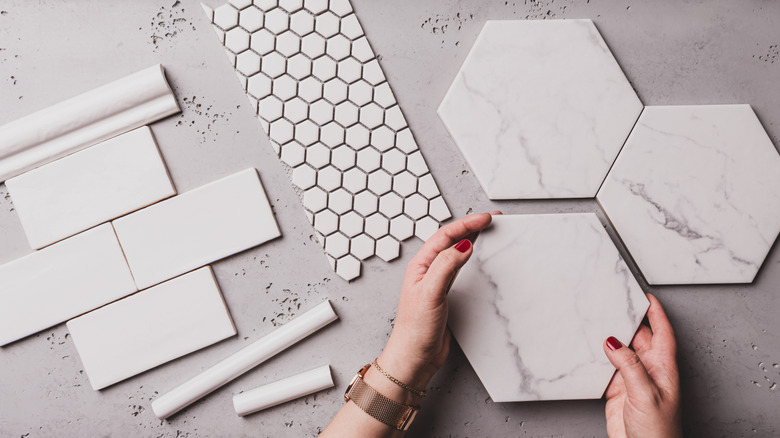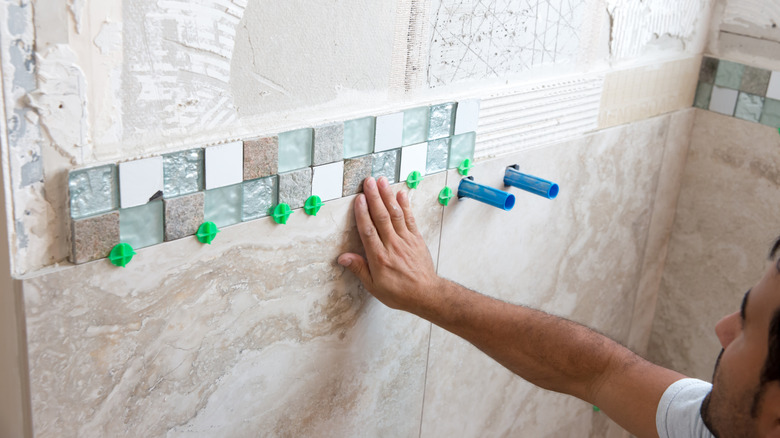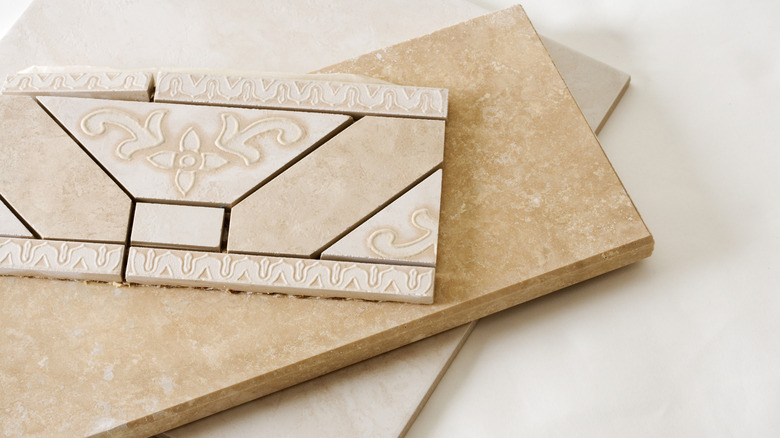How To Mix And Match Backsplash Tiles In Your Kitchen For Stunning Results
Choosing the right kitchen backsplash tile can be a big commitment. Not only is it a potentially expensive proposition, but it's a choice you will be living with for years to come. Most homeowners are striving to choose a backsplash they love and may have trouble narrowing it down to only one design. If that sounds familiar, there's good news! If you can't choose just one tile to commit to, it's fine to mix and match styles — it's even on-trend.
When mixing and matching backsplash tiles, there are two main methods. First, you can use different materials — pairing ceramic with stone, for example — to create a contrast in texture or color. Second, you can use various sizes and shapes of tiles to produce interesting patterns or focal points. Combine the methods if you're really adventurous.
As long as you take the time to think it through and consider a few factors, the result should be stylish. Of course, it is your opinion that matters most when decorating your home — especially if you are in your forever home. Still, when trying something new, though, it is advisable to do some homework to make sure the result is exactly what you want.
Mixing materials in your backsplash
These days, kitchen backsplashes are taking on many forms, but there are a few things to keep in mind to achieve a cohesive look. First, do not choose multiple tiles with busy patterns. Instead, consider pairing something like a simple ceramic tile with a classic penny round in glass for a little extra shine.
Mixing materials is also a great way to introduce a little luxury through strategic use of expensive materials while keeping costs down by mixing it with cheaper material. For instance, a ceramic backsplash typically costs somewhere between $12-$32 per square foot, while marble can cost about $30-$150 per square foot. While natural stones are slightly more limited in color, ceramic and porcelain tiles come in endless options, meaning you can almost certainly find something to work with your pricier stone.
Further, finishes and color are important considerations. You can introduce variety or texture by mixing finishes, like a matte hexagon tile with high gloss glass or porcelain. Or, you can even use very similar tiles — such as a subway tile — in two different finishes to add just a hint of variety. If you'd rather play with color than finish, the best kitchen tile colors will either complement or contrast each other.
Mixing shapes and sizes
Another way to spice up your tile choices is to choose similar, or the same, materials but to mix and match the sizes and shapes. Changing up the shape or size of the tile but staying with the same color and materials creates visual interest without making the backsplash appear too busy. This is especially easy to do with ceramic tiles that come in a wide array of options. For instance, you might pair a beige mosaic hexagon tile with a subway tile in the same material and finish it off with a matching trim detail.
Keep one thing in mind when using this method: size matters. Two large tiles will not be as effective as mixing a larger tile with a smaller one; the varying dimensions create depth. You will likely see this method used when creating a focal point behind the stove, as smaller tiles create a more intricate pattern and the larger tiles are used on the longer expanses behind the counter. Ultimately, though, you're only limited by your creativity — plus, quirky backsplash designs are making a comeback, so do not be afraid to experiment. For instance, you might create a focal point above the stove by using a glass pennyround tile with a couple of ceramic tiles that are the same color and finish but different shapes or sizes.


